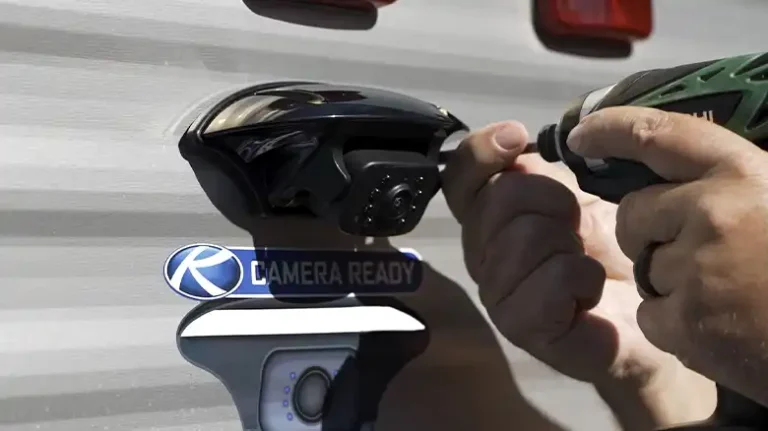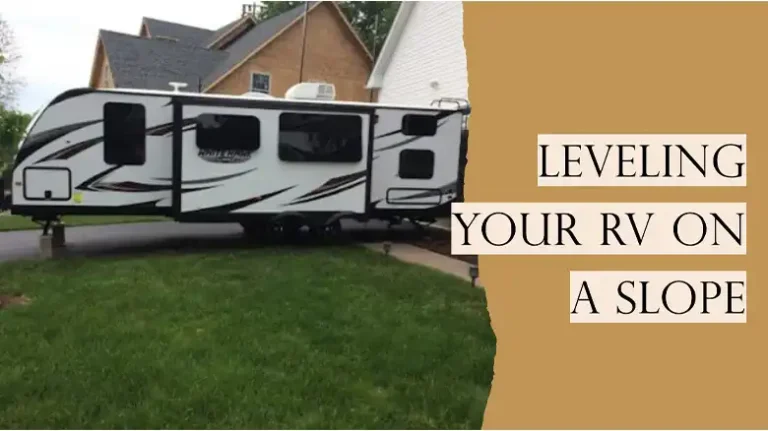How To Select The Right Weight Distribution Hitch | What Should Consider
An inappropriate hitch can result in trailer sway, uneven tire wear, reduced steering and braking control, and excessive strain on your tow vehicle. For this, selecting the right weight distribution hitch is important. But do you know how to choose the best weight distribution hitch for your needs?
An adjustable weight-distributing hitch transfers this downward force to all axles and the trailer tongue, restoring normal load distribution and tire contact for vastly improved road manners. Carefully matching the hitch to your exact vehicle and trailer weights ensures optimal performance.
In this detailed walkthrough, I will explain weight distribution concepts, hitch types, and components, how to determine your needs through actual weight measurements, and top hitch installation tips for DIYers. Read on to learn the ideal process for selecting a system to enhance your rig’s safety, stability, drivability, and longevity while towing.
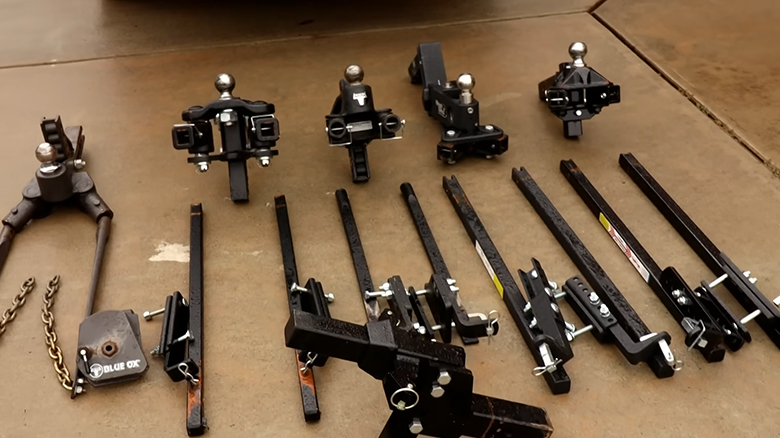
Types of Weight Distribution Hitches
There are two major categories of weight distribution hitches:
Friction Sway Control (FSC) Hitches
These economical hitches combat trailer sway via basic adjustable friction at the hitch ball connection point.
Friction is dialed in by tightening U-bolts on bars that apply a clamping force to the hitch head assembly. More friction limits side-to-side motion between the tow vehicle and trailer for reduced sway potential.
Benefits:
- Simple, lightweight design
- Low cost
- Takes the edge off the trailer’s sway
Limitations:
- Friction wears over time, requiring re-tightening
- Minimal effect on actual weight distribution
- Limited sway-damping performance
Overall, basic FSC hitches offer a budget-friendly option for lighter-duty towing applications below 10,000 lb trailers.
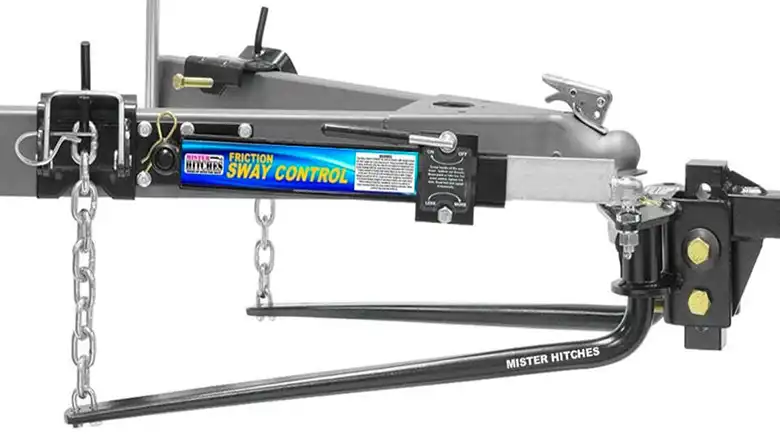
Dual-Cam Weight Distribution Hitches
Engineered with more robust weight transfer and sway control, dual-cam hitches utilize hardened steel cam assemblies that latch onto the spring bars to achieve tension that evens out front/rear balance and largely eliminates trailer sway.
Dual cams provide a fixed mechanical connection and ample adjustments to fine-tune weight distribution based on real-world testing and measurements.
Benefits of dual-cam hitches:
- Actively transfers weight side/side and front/back via spring bars for ideal axle loading
- Locks in hitch ball angle securely to minimize sway
- Robust, time-tested mechanical design with cams, chains, and spring bars
- Wide range of settings for precision custom tuning
- Handles heavy loads beyond 15,000 lb with the right setup
These traits make dual-cam the top choice for many RV trailering applications – when properly set up based on your vehicle measurements and configuration.
Next, let’s walk through the process of determining the correct hitch components and ratings for your specific tow setup.
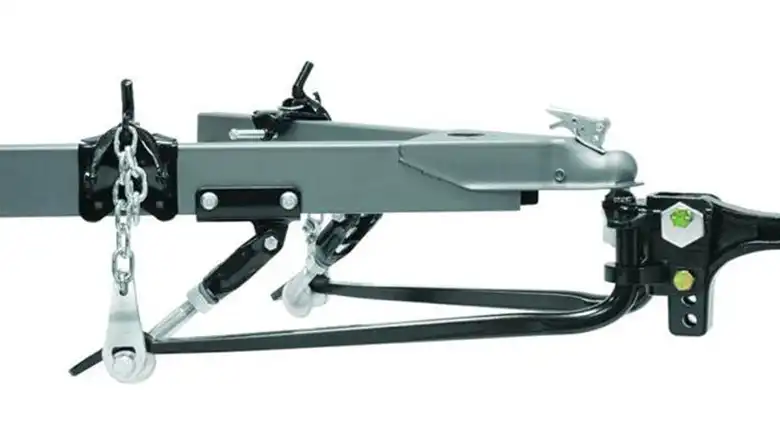
Different Kits to Choose From
Here is a comparison table of round bar kits, trunnion bar kits, and Andersen weight distribution kits:
| Feature | Round Bar Kits | Trunnion Bar Kits | Andersen Kits |
| Bar Shape | Round | Square | N/A (uses chains + shocks) |
| Bar Attachment | Slide up from below | Insert from sides | N/A |
| Ground Clearance | Low | High | N/A |
| Performance on Gravel Roads | Good | Better – can transfer weight side-to-side | N/A |
| Cost | Lower | $50-$100 more | N/A |
| TWD Capacity | 600-1200 lbs | 600-1700 lbs | 200-1400 lbs |
| Other Features | Integrated swag control, silent ride, no need to snap up bars | ||
| Recommended TWD Range | 200-800 lbs |
How To Determine Your Weight Distribution Hitch Needs
Selecting adequate hitch capacity for safe, stable towing requires carefully weighing your fully loaded vehicle and trailer to calculate key metrics. This data allows you to select optimal components rated for your GCWR, vehicle axle loads, and tongue weight requirements.
Follow this best practice process:
Step 1 – Calculate Your GCWR
Determine your combined fully loaded tow vehicle and trailer Gross Combined Weight Rating (GCWR) from the manufacturer specs. This is the maximum allowable combined weight supported.
Ensure your GCWR accommodates your real-world loaded weights with margin:
GCWR = GVWR (tow vehicle) + GVWR (trailer)
Towing near GCWR limits places more demand on all components.
Step 2 – Measure Key Weight Parameters
Take your fully prepped rig with cargo, water, propane, etc. to a truck scale and measure:
- Tow vehicle front axle weight
- Tow vehicle rear axle weight
- Total tow vehicle weight (GVWR)
- Loaded trailer weight (GVWR)
- Trailer tongue/kingpin weight
This provides critical data for configuring your hitch properly.
Step 3 – Hitch Capacity And Weight Distribution Ratings
With GCWR and weight values in hand, select an adequate hitch in two key areas:
1. Overall Tow Rating
Your hitch and its components like bars and chains must support your GCWR safely. Most quality WD hitches accommodate up to 15K lb capacity when set up properly.
2. Tongue Weight Rating
This indicates the hitch’s weight transfer ability for tongue loads and trailer GVWRs. For example, a 10K/1K hitch handles:
- Up to 10,000 lb trailer GVWR
- Up to 1,000 lb tongue weight
Ideally, choose at least a 20% margin over your measured tongue weight for stability.
Here is which hitch is right for which trailer:
- 600 lb is suitable for a trailer that weighs between 135-275kg.
- 800 lb is suitable for a trailer that weighs between 275-365kg.
Step 4 – Spring Bar Rating And Quantities
Spring steel bars transfer weight forward and back via leverage. Their strength must match the requirements:
1. Load Capacity
Select bars rated for your hitch’s tongue weight capacity. Include capacities of multiple bars.
2. Quantity And Sizing
The number and size of bars affect precision in distributing weight. More and longer bars provide finer adjustment.
Step 5 – Select Accessories Like Sway Control And Ball Mounts
Flesh out your hitch package with compatible balls, ball mounts, sway control dampers, and safety chains rated to your needs. These accessories enable complete custom configuration for your rig.
Taking the time upfront to carefully match all hitch components to your particular GCWR, axle loads, and tongue weight results in a system with adequate capabilities, adjustment range, and safety margin for confident towing.
Or
You can try this Weight Distribution Hitch Calculator to determine your hitch requirements.
The Importance of Weight Distribution for Trailer Hitches
Before selecting a hitch, it’s important to understand precisely how it improves towing:
How Towing Without Weight Distribution Affects Handling
Studies show that towing a travel trailer or fifth wheel exerts a tremendous downward force on the rear axle of your tow vehicle via the hitch. This shifts excessive weight to the back axle, reducing front axle loading.
The typical front/rear weight distribution changes from approximately 60%/40% without a trailer to 35%/65% when towing a heavy load.
Negative Effects of Improper Weight Distribution
This radical front/rear imbalance has seriously detrimental effects:
- Reduced front tire traction and steering responsiveness – With insufficient weight on the front tires, lateral grip and steering authority are compromised. This leads to wandering, sluggish reactions, and increased sway.
- Overloaded rear axle and tires – Too much weight presses down on the rear tires, accelerating tread wear and even causing blowouts. It also overloads rear axle components, especially on 3/4 or 1-ton pickups.
- Squatting rear suspension – Heavy rear loading compresses the rear shocks, sagging the chassis downward at the hitch and tilting the trailer up abnormally in front.
- Elevated front suspension – Unburdening the front axle lifts the chassis upward at the front wheels, reducing stability.
- Stress on the hitch and vehicle frame – All towing force channels straight downward through the hitch receiver and into the vehicle frame, concentrating extreme loads in those areas. This strains your truck over time.
How Weight Distribution Levels and Balances Forces
Weight distribution hitches employ leverage to transfer much of the tongue load force rearward to the trailer axles and forward onto the front axle of your truck.
This evens out front/rear balance across all axles, optimizing tire loading and grip for significantly enhanced performance in every respect.
Properly set up systems also limit vertical hitch movement, enhancing towing stability. Let’s examine popular types that achieve these positive results.
How To Install A Weight Distribution Hitch
Once you’ve selected adequate gear, proper installation is crucial for dialing in ideal weight distribution. Take time setting up and adjusting your system meticulously with these tips:
Prep The Trailer And Tow Vehicle
Park on level ground and block trailer tires securely. Confirm fully loaded vehicle and trailer weights. Lubricate the ball and socket pre-assembly.
Prep The Hitch Head And Shank
Install shank in receiver tube with pins/clips. No slop should exist. Mount proper ball size.
Attach Spring Bars And Snap-Up Brackets
Start by lifting the coupler socket’s front end onto the ball loosely. Attach spring bars to hitch head and brackets on trailer A-frame, centered evenly.
Latch Cams And Tighten U-Bolts
Close cams over the spring bars, then incrementally tighten u-bolts until the bars are just snug initially.
Adjust the Angle By Raising/Lowering the Hitch Ball
Place level on the trailer frame. Alter ball height with washers to position the trailer exactly level left/right and front/back.
Tighten Spring Bars And Recheck Level
Ratchet cams down further on both sides while checking run channel alignment. Tighten evenly until level. Do not over-compress.
Test Tow And Further Adjust
Tow around the block, evaluating ride, sway, tire loading, and temperatures before/after. Fine-tune hitch tightness accordingly.
While installation varies across hitch models, taking the time to properly set up, adjust, and test your system is the key to maximizing performance and your towing peace of mind.
Weight Distribution Hitch Maintenance
Like any gear supporting thousands of pounds of vehicle weight, weight distribution hitches require proactive inspection and upkeep. Follow this preventative protocol:
- Check U-Bolts And Cams: Confirm u-bolts are tightened to specified torque before each trip, and periodically on longer journeys. Make sure cams lock the spring bars securely in place throughout their range of travel.
- Inspect Wear Items: Closely check the hitch ball, bar ends, and trailer socket for wear or cracks that can lead to failure. Also, ensure welds are sound with no visible defects or corrosion.
- Keep Components Clean/Lubed: Wash dirt/debris off chains, bars, and cylinders regularly. Coat connection points with water-resistant lube often to prevent binding and wear.
- Confirm Fit in Receiver: Make certain the hitch receiver tube is clear of obstructions and excessive play for the shank to fit snugly with no slop or movement.
- Adjust When Needed: If you note trailer leaning, sway, or inconsistent tire loading, take time to readjust spring bar tension and angle settings to restore proper weight distribution.
Like other key towing gear, keeping your weight distribution hitch in top shape ensures it actively enhances stability, handling, and safety every mile you travel.
Conclusion
The best weight distribution hitch effectively transfers tongue and hitch weight to balance the trailer and tow vehicle tires optimally. This prevents dangerous sway, boosts responsiveness, and reduces wear – going a long way toward making tailing safe and enjoyable.
Carefully calculating your maximum loaded trailer tongue weight and GVWR determines minimum hitch capacity needs and ratings. Professional installation, testing, and periodic fine-tuning then provide a custom-tuned setup delivering confident performance mile after mile.
Don’t hesitate to leave a comment below if you have any other questions on selecting the ideal WD hitch system for your travel trailer or fifth wheel! Thanks for reading – safe travels!
FAQs and Answers
What Is The Best Brand Of Weight Distribution Hitch?
The top weight distribution hitch brands are Blue Ox, Equal-i-zer, Fastway, Reese, and Husky based on independent testing and towing community reviews. All offer dual cam systems engineered for excellent build quality, easy adjustment, and reliable service.
How Much Does A Weight Distribution Hitch Cost?
Basic friction sway control weight distribution hitches start around $130, while advanced dual cam mechanical systems range from $500 to $800 normally. Higher capacity hitches for larger loads can run $1500 and up.
How Do I Know If My Weight Distribution Hitch Is Adjusted Properly?
Proper adjustment is indicated by the trailer sitting level left/right and front/back. Also, check for even tire loading and minimal squat/dive while accelerating and braking. Fine-tune spring bar tension until sway is eliminated.
When Should You Use A Weight Distribution Hitch?
Weight distribution hitches are recommended whenever towing heavier travel trailers or 5th wheels weighing over 5000 lb loaded. They actively transfer hitch weight to create ideal axle load distribution and maximize stability.
Can I Install A Weight Distribution Hitch Myself?
Yes – weight distribution hitches are entirely feasible for DIY installation given mechanical ability. Carefully follow the manufacturer’s setup and adjustment guidance. Tow test hitches before extended trips to fine-tune weight distribution.


